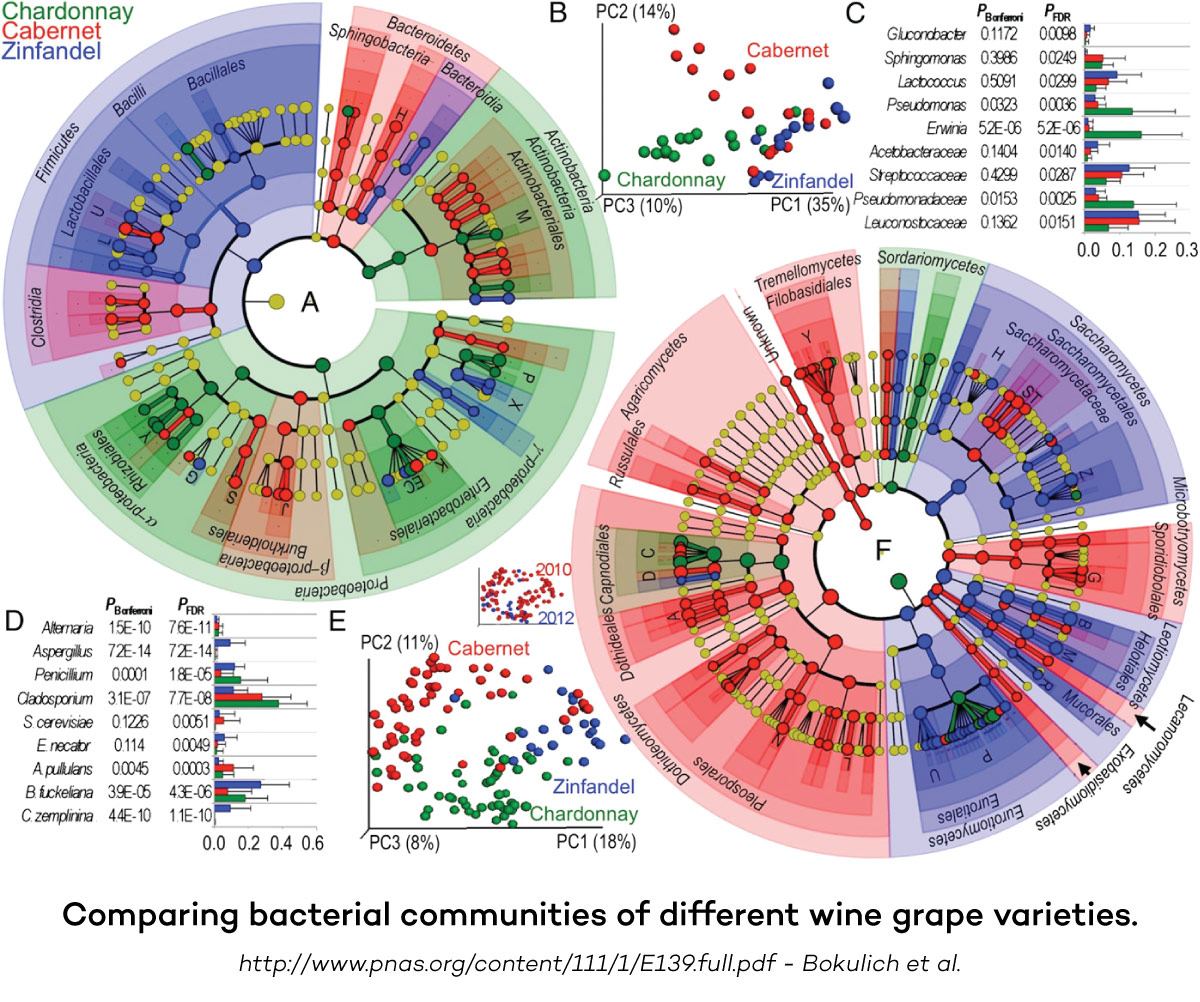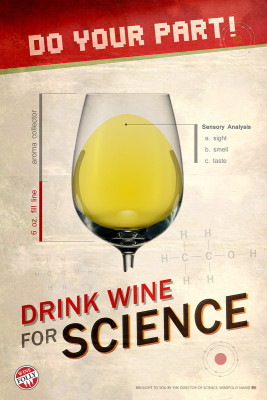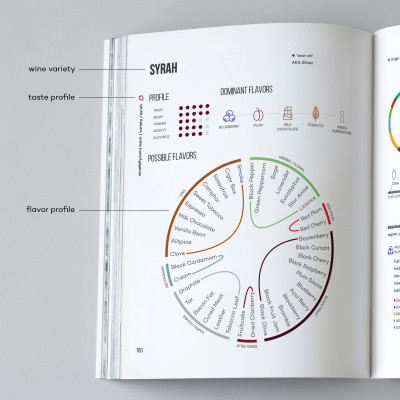Our cultural phobia of bacteria in the 1990s turned out to be a bit of a bad idea. Turns out, bacteria (and lets not forget: fungi!) are pretty important. Besides the benefits for health, scientists believe that microbes tell us a lot more about wine than we ever thought.
Are Bacteria What Makes “Terroir” in Wine?

The types of bacteria and fungi present in Chardonnay grapes from different regions in California. by Bokulich et al.
Much like a forensics team can analyze microbes on evidence to connect it to a site, scientists at UC Davis have been studying microbes in vineyard sites and in wines. They’ve been able to prove a clear existence of a unique biogeographic fingerprint based on the types and amounts of fungi and bacteria present in grape must (must = mushed up grapes).
What does this mean?
It means that every wine has unique biological indicator of where it’s from and even what year it was made. While the study hasn’t yet connected how these microbial differences may link to sensory qualities (e.g. how the wine tastes), they will continue to experiment, looking for correlations.

An analysis of the differences in microbial communities on Cabernet Sauvignon, Zinfandel and Chardonnay from the same site. Bokulich et al.
Why this is a big deal
Before this study, experts thought that soil type was the defining feature to why wines have so much regional variation. However, much of the research to support this theory has shown many dead-ends. This study opens up a new realm of possibilities that may help answer the ages-old question: “What is terroir in wine?”
a new realm of possibilities that may help answer
the ages-old question: “What is terroir in wine?”
 The study will have several other potential applications that could also improve wine quality. For example, studying microbiology could help identify possible vineyard sites or even be used as a criteria to define a new viticultural area. On the agricultural side, scientists could use this information to create predictive models to help produce higher quality wine consistently year-after-year.
The study will have several other potential applications that could also improve wine quality. For example, studying microbiology could help identify possible vineyard sites or even be used as a criteria to define a new viticultural area. On the agricultural side, scientists could use this information to create predictive models to help produce higher quality wine consistently year-after-year.
Wine + Science is Awesome
The more we learn and understand wine, the more we end up learning and discovering about ourselves. Many thanks to Nicholas Bokulich, David Mills, and the other researchers on this project.
Source
Microbial biogeography of wine grapes is conditioned by cultivar, vintage, and climate
Explore the taxonomy of wine
Explore the book that combines sleek data visualization with wine grape varieties, regional maps, fundamental wine traits, and professional techniques. You will enjoy all it has to offer.
